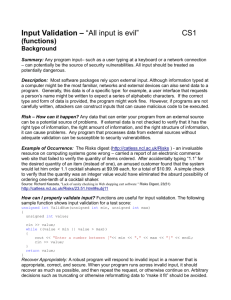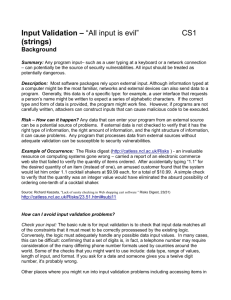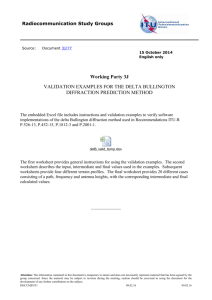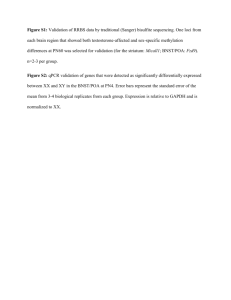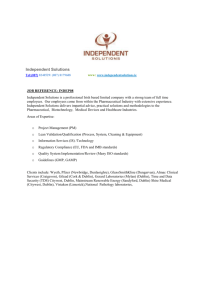Functions - Computer and Information Sciences at Towson University
advertisement
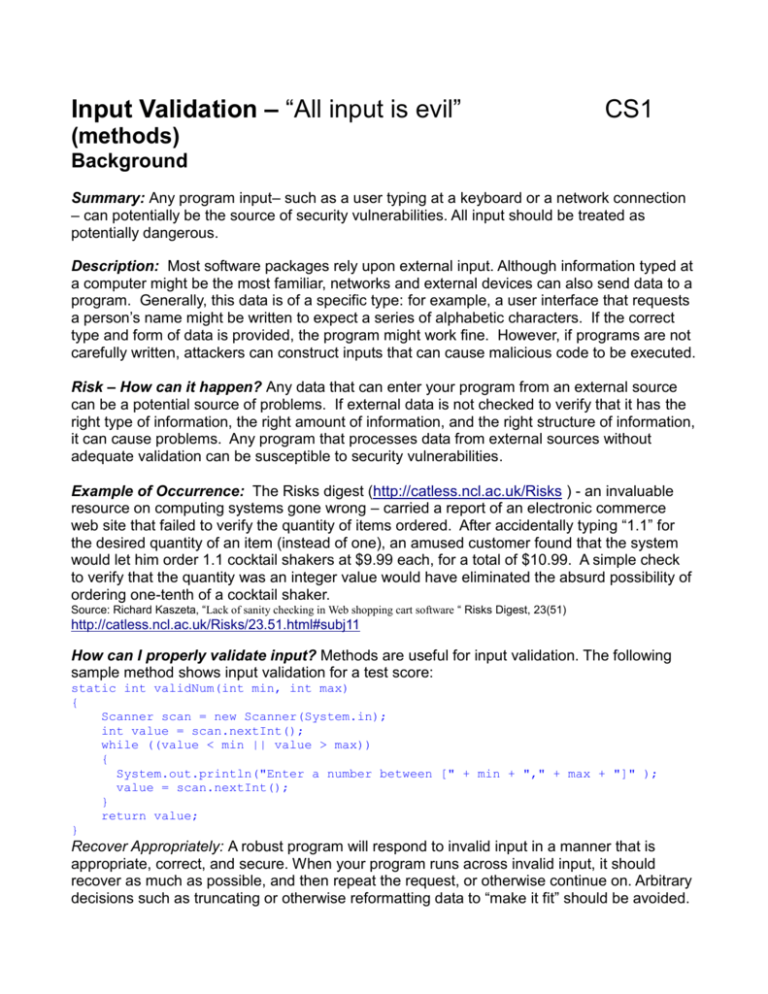
Input Validation – “All input is evil”
CS1
(methods)
Background
Summary: Any program input– such as a user typing at a keyboard or a network connection
– can potentially be the source of security vulnerabilities. All input should be treated as
potentially dangerous.
Description: Most software packages rely upon external input. Although information typed at
a computer might be the most familiar, networks and external devices can also send data to a
program. Generally, this data is of a specific type: for example, a user interface that requests
a person’s name might be written to expect a series of alphabetic characters. If the correct
type and form of data is provided, the program might work fine. However, if programs are not
carefully written, attackers can construct inputs that can cause malicious code to be executed.
Risk – How can it happen? Any data that can enter your program from an external source
can be a potential source of problems. If external data is not checked to verify that it has the
right type of information, the right amount of information, and the right structure of information,
it can cause problems. Any program that processes data from external sources without
adequate validation can be susceptible to security vulnerabilities.
Example of Occurrence: The Risks digest (http://catless.ncl.ac.uk/Risks ) - an invaluable
resource on computing systems gone wrong – carried a report of an electronic commerce
web site that failed to verify the quantity of items ordered. After accidentally typing “1.1” for
the desired quantity of an item (instead of one), an amused customer found that the system
would let him order 1.1 cocktail shakers at $9.99 each, for a total of $10.99. A simple check
to verify that the quantity was an integer value would have eliminated the absurd possibility of
ordering one-tenth of a cocktail shaker.
Source: Richard Kaszeta, “Lack of sanity checking in Web shopping cart software “ Risks Digest, 23(51)
http://catless.ncl.ac.uk/Risks/23.51.html#subj11
How can I properly validate input? Methods are useful for input validation. The following
sample method shows input validation for a test score:
static int validNum(int min, int max)
{
Scanner scan = new Scanner(System.in);
int value = scan.nextInt();
while ((value < min || value > max))
{
System.out.println("Enter a number between [" + min + "," + max + "]" );
value = scan.nextInt();
}
return value;
}
Recover Appropriately: A robust program will respond to invalid input in a manner that is
appropriate, correct, and secure. When your program runs across invalid input, it should
recover as much as possible, and then repeat the request, or otherwise continue on. Arbitrary
decisions such as truncating or otherwise reformatting data to “make it fit” should be avoided.
Laboratory/Homework Assignment:
1. Write a method that asks the user to enter a body temperature. Include appropriate
input validation.
2. Write a method that asks the user to enter a body weight. Include appropriate input
validation.
3. Write a method that asks the user to enter a height, in feet and inches. Return the total
inches. Include appropriate input validation.
4. Write a program to enter patient information, including name, temperature, age, height,
and weight. Include the following methods:
a. A method to indicate if the temperature is normal (between 97 and 99 degrees)
b. Calculate the BMI : (weight in pounds /height in inches)2 * 703
c. Indicate if they are:
Below 18.5:
underweight
18.5-24.9:
normal
25.0 – 29.9:
overweight
30.0 and above: obese
Allow the program to enter information for many patients.
5. Complete the following checklist for each program. Add any additional input validation
to your program.
Security Checklist:
Security Checklist
Vulnerability
Improper Input Validation
Course
Task – Check each line of code
CS1
Completed
1. Mark with a V each variable that is input.
For each input variable, which of the following is applicable: Yes N/A
1. Check length
2. Check range (reasonableness?)
3. Check all options
4. Check type
Shaded areas indicate vulnerabilities
Discussion Questions:
1. What are the challenges of adding input validation to your programs?
2. Another important security strategy is "defense in depth". Explain what you think this
means and how it relates to input validation.
